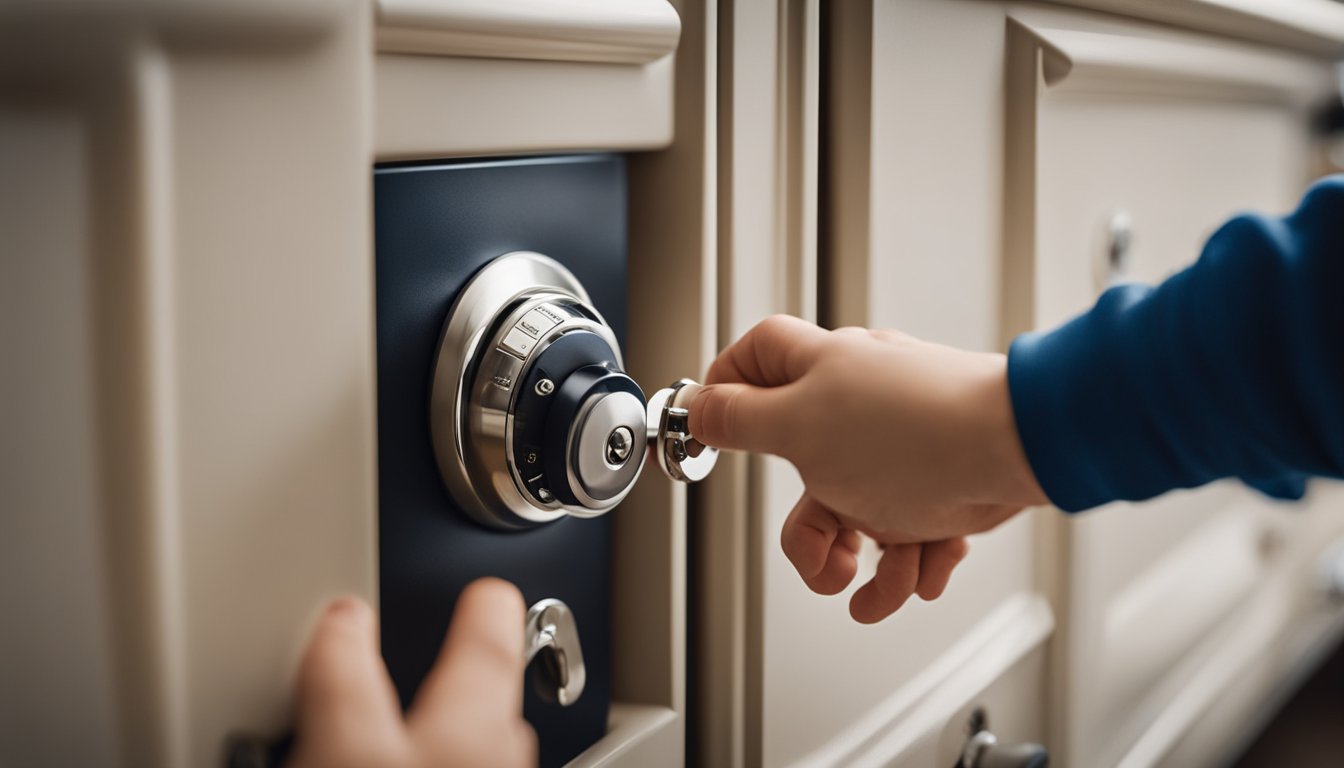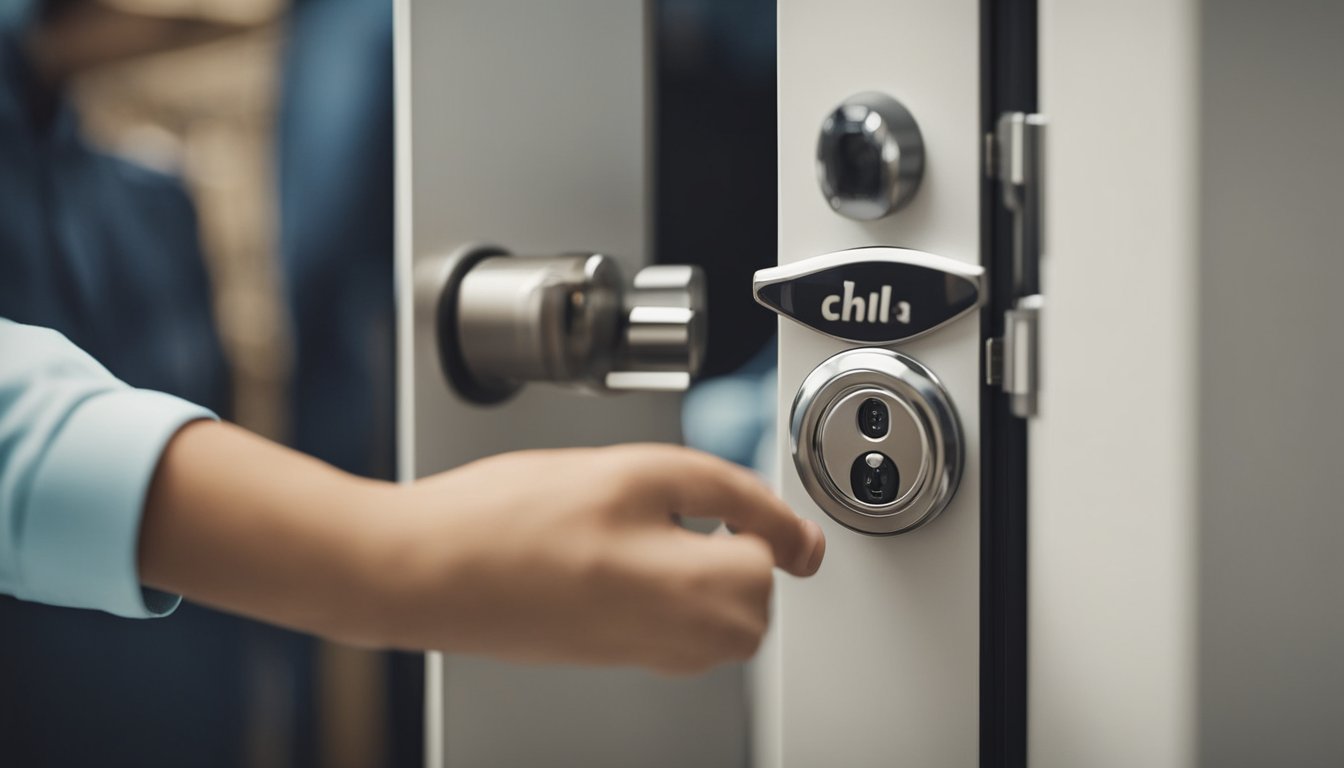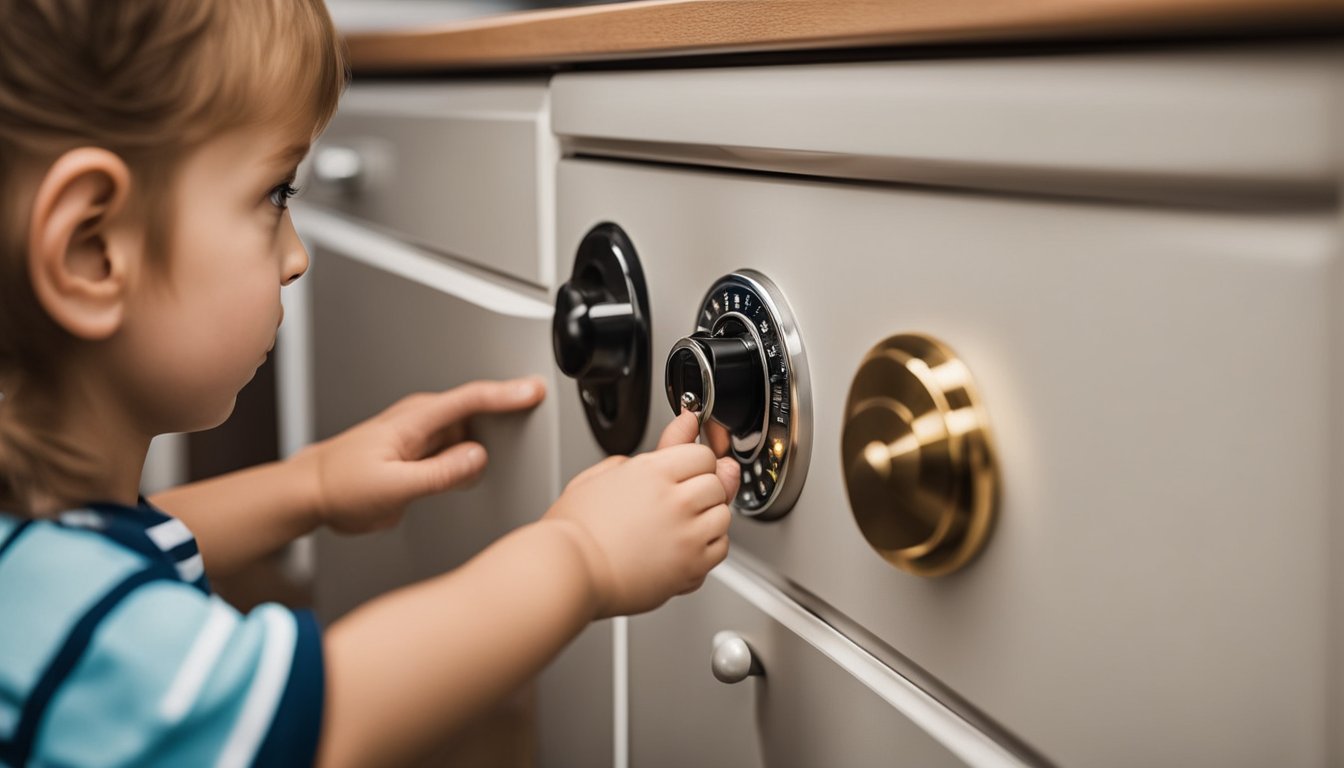Late updated: 11 Aug 2024 08:08
Written by: Elena Prescott
Securing Your Homes With Child-Safe Locks: Essential Tips for Optimal Safety
Securing our homes to ensure the safety of our little ones is paramount. Investing in child-safe locks is a key step to prevent toddlers from accessing potentially dangerous areas like kitchens or bathrooms. This not only keeps them safe but also provides us with peace of mind.

Understanding the types of child-proof locks available can be overwhelming, but it's essential for enhancing home safety. From cabinet locks to door handle covers, these devices act as an effective barrier, ensuring our children are always safe within their environment.
As we delve into the installation of these locks and other in-home safety measures, we'll explore practical tips and answer common questions about childproofing. Stay tuned for actionable insights that can transform any home into a sanctuary of safety for our children.
Key Takeaways
- Child-safe locks prevent toddlers from accessing dangerous areas.
- A variety of locks and covers are available for comprehensive protection.
- Practical tips and FAQs will guide you in enhancing home safety.
Fundamentals of Child-Safe Lock Installation
Childproofing your home is crucial to ensure the safety of your children. Proper installation of child-safe locks involves understanding safety standards, choosing the right type of locks, and effectively securing various areas of the home.
Understanding Safety Standards and Regulations
When installing child-safe locks, it’s vital to comply with safety standards and regulations. These rules ensure that products are reliable and effective. Many safety devices are certified by organisms such as the British Standards Institution (BSI) or comply with European safety norms.
To verify compliance, look for certifications or seals on packaging. Locks that meet these standards are designed and tested to prevent common household injuries. Using non-compliant products might not offer adequate protection. Understanding these regulations safeguards the well-being of our children and provides peace of mind.
Selecting the Right Locks for Your Home
Choosing the appropriate locks is crucial for effective childproofing. Several types of locks are designed for different uses, such as cabinet locks, door locks, and window locks. For cabinets, magnetic locks are popular due to their effectiveness and ease of installation.
Window locks are essential to prevent falls, particularly in multi-storey homes. Safety gates are indispensable near stairs to block access and minimise the risk of accidents. When selecting locks, consider the specific needs of each area. Ensure they are easy for adults to use, yet secure enough to keep children safe.
Securing Different Home Areas
Different areas of the home pose distinct risks and require tailored solutions. In the kitchen, install cabinet locks on cupboards containing hazardous items. Childproof locks on drawers with sharp objects are essential. Safety gates should be placed at the top and bottom of stairs to prevent falls.
Window locks are vital to prevent children from opening windows and potentially falling out. In living areas, secure furniture and electronics to avoid tip-overs. Bathrooms should also be secured with locks on cabinets containing cleaning products or medicines. By systematically addressing each area, we can create a safer environment for our children.
Enhancing In-Home Safety Measures

Ensuring our home remains a secure environment for our children necessitates attention to potential hazards, especially access to dangerous items, electrical safety, and other safety devices and practices.
Preventing Access to Dangerous Items
The kitchen and bathroom are high-risk areas where children might encounter dangerous items. We should secure chemicals, cleaning supplies, and medicines in locked cabinets. Installing child-proof locks on drawers helps keep sharp objects like knives out of reach.
Using door knob covers and safety gates can restrict access to these areas. In the living room, securing heavy furniture with anchors prevents tip-over accidents. Glass and fragile items should be placed in locations inaccessible to children to avert breaks and injuries.
Addressing Electrical Safety
Electrical outlets pose a significant risk to curious children. Using outlet covers can prevent accidental shocks or burns. Cords should be neatly managed and kept out of sight, as loose cords can be enticing for children to pull or chew on.
Opt for appliances with automatic shut-off features to reduce hazards. Electrical outlets near water sources need ground-fault circuit interrupters. Ensuring these systems are in place helps minimise the risk of electrical accidents in our home.
Additional Safety Devices and Practices
Windows and doors require careful attention. Installing window guards or cordless window coverings can deter children from dangerous falls. Door handle covers help prevent unsupervised access to certain rooms. Edge guards on furniture can soften sharp corners.
Smoke alarms and baby monitors are essential for added safety. Keeping hot appliances out of children's reach and using toilet locks to prevent bathroom accidents further enhances home safety. These combined measures create a safer living space for our children, reducing the likelihood of accidents.
Frequently Asked Questions

Ensuring your home is secure for children involves various aspects. From essential items on a baby proofing checklist to choosing the right products and services, this guide covers vital information for creating a safe environment for your little ones.
What are the essential items on a baby proofing house checklist?
Essential items include cabinet locks, door locks, outlet covers, edge bumpers, and safety gates. Install latches on cabinets containing hazardous items and covers on electrical outlets. Safety gates should be placed at the top and bottom of stairs.
Which devices are recommended for enhancing child safety in the home?
Devices like magnetic cabinet locks, door knob covers, and baby monitors are invaluable. Magnetic locks are discreet and difficult for children to open. Door knob covers prevent toddlers from accessing rooms unsupervised. Baby monitors offer constant vigilance.
What considerations should be taken into account when selecting baby proofing services?
Consider the company’s reputation, customer reviews, and whether they offer customised solutions. It's also important to check if the professionals are certified and if they provide a thorough assessment of your home’s safety.
How can parents ensure their cabinets are effectively child proofed?
Installing magnetic or adhesive locks inside cabinets is effective. These locks are easy for adults to unlock but difficult for toddlers. Additionally, storing hazardous items in upper cabinets and securing cabinets with dangerous contents is essential.
At which developmental stage is it critical to baby proof a house?
It’s critical to start baby proofing when your child begins to crawl, typically around 6 to 10 months. Crawling increases a child's ability to explore, making them more susceptible to hazards within the home.
What are the top-rated products available for baby proofing a home?
Top-rated products include Safety 1st Magnetic Locking System, Dreambaby Adhesive Mag Locks, and Regalo Easy Step Walk Thru Gate. These products are highly rated for their durability and effectiveness in securing homes for children.
